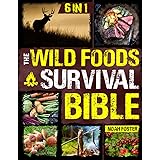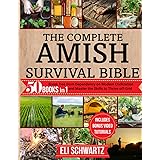Scottish Survival Food: Unearthing the Hearty History of Scots Barley Broth
For centuries, the Scottish people navigated a landscape that often posed significant challenges to agricultural abundance. Around 300 years ago, a resourceful spirit became synonymous with their way of life, driven by the land’s less fertile nature compared to areas like England. In fact, many historical accounts detail the struggles faced by communities striving for sustenance in a rugged environment. The video above masterfully illustrates how this ingenuity led to the development of remarkable survival foods, with particular emphasis on the enduring legacy of barley. These historical foodways offer not just a glimpse into the past but also a valuable lesson in resilience and resourcefulness, elements often overlooked in modern culinary discourse.
As is explored in the accompanying video, the ingenuity of those living in 18th-century Scotland allowed for a diet that prioritized nutrition and affordability. This often meant relying heavily on grains that could thrive in the local climate, forming the bedrock of what is now recognized as traditional Scottish cuisine. Furthermore, the harsh realities of constant political strife and frequently unfair living conditions intensified the need for economical and filling meals. Consequently, many Scots were driven to immigrate to North America during this challenging period, underscoring the severe pressures that shaped their daily lives and culinary choices.
Barley: The Unsung Hero of Historical Scottish Cuisine
While oatmeal is often celebrated as a quintessential Scottish staple, barley played an equally, if not more, crucial role in the historical Scottish diet, especially as a vital source of Scottish survival food. This versatile grain, known for its ability to grow well in cooler climates, was a foundational element in countless meals. During the 18th century, barley’s significance dramatically increased when crop failures made wheat an extremely expensive commodity, rendering it inaccessible to much of the population. Therefore, alternative grains such as barley became indispensable, solidifying their place in the daily diet of Scots.
Consequently, barley was readily adopted as a substitute for wheat in various preparations, most notably in bread. However, its true power as a potent food source was particularly evident when incorporated into soups. As mentioned in historical texts referencing the poor in the 18th century, it was observed that while barley bread was made, a far more efficient and nourishing use of barley was in a hearty soup, where its unique properties could truly shine. The grain’s exceptional thickening ability meant a small amount could transform a simple broth into a substantial, calorie-dense meal, crucial for daily survival. This strategic use of barley highlights the deep understanding of food utility prevalent among the Scottish people.
The Unique Qualities of Barley in Cooking
Barley behaves quite differently from other grains like oats or wheat when subjected to heat and water. When boiled, especially for extended periods, barley gradually releases starches that thicken liquids, developing a gelatinous consistency. This remarkable property made it an ideal ingredient for creating filling and nutritious broths, transforming thin soup into a satisfying and stick-to-your-ribs meal. The resulting texture not only added body to dishes but also contributed significantly to a feeling of satiety, helping people feel full for longer periods. This characteristic was particularly valuable during times of scarcity, ensuring maximum nourishment from limited resources.
Beyond its role in everyday meals, barley’s versatility extended to other surprising applications. For instance, barley sugar, a type of hard candy, was a popular treat enjoyed by many. Additionally, barley water was a highly valued beverage, known for its cooling properties during the summer months and its restorative qualities for feeding the sick. These varied uses underscore barley’s profound importance in the diet and health practices of historical Scotland, establishing it as far more than just a simple grain. Its adaptiveness cemented its position as a cornerstone of Scottish survival food, providing both sustenance and comfort.
From Frugal Sustenance to Comforting Meal: The Evolution of Scots Barley Broth
The late 1700s witnessed a substantial growth in Great Britain’s urban populations, which presented significant challenges in feeding the burgeoning poor. This era saw writers and social commentators—effectively the “food bloggers” of their time—actively seeking sustainable solutions to food scarcity. Their research often led them to examine how people survived in regions like Scotland, other parts of Europe, and even North America, where ingenuity in food preparation was a necessity. Solutions were actively sought and documented, reflecting a wider societal concern for public welfare.
A key suggestion that emerged from these investigations was the increased use of barley, specifically drawing inspiration from how Scots had long incorporated it into their diets. This humble grain, central to traditional Scottish survival food, was recognized for its nutritional value and cost-effectiveness. The original Scots Barley Broth was a quintessentially practical dish, designed for maximum sustenance with minimal fuss, reflecting a time when every ingredient counted and every meal had to provide sufficient energy for labor. Such dishes were born from necessity but perfected through generations of culinary wisdom.
However, as time progressed and the challenges of extreme poverty began to recede for some, the perception and preparation of Scots Barley Broth started to evolve. What began as a “lowly dish” for survival gradually morphed into more elaborate versions found in English cookbooks, often stripped of its original purpose. These later iterations sometimes saw the beef removed entirely after flavoring the broth, or new, more expensive ingredients like fowl, carrots, and a wider array of herbs being added, fundamentally altering the dish from its humble origins. The emphasis shifted from pure sustenance to flavor and refinement, losing touch with the dish’s historical roots.
Elizabeth Cleland’s 1755 Recipe: A Window into Authentic Scots Barley Broth
To truly understand the essence of authentic Scottish survival food, one must look to historical sources. The recipe featured in the video is derived from Elizabeth Cleland’s seminal work, *A New and Easy Method of Cookery*, published in 1755. This period cookbook provides invaluable insight into the culinary practices of the 18th century, offering a glimpse into what was considered both practical and nourishing for the average household. Cleland’s work stands as a testament to the ingenuity of home cooks navigating the dietary constraints of their era.
Cleland’s recipe for Scots Barley Broth originally called for a “Hough of Beef” (a cut from the leg, typically tough but flavorful) boiled in eight pints of water with a pound of barley, slowly reduced to four pints. Simple additions like onions, pepper, salt, and optionally raisins, greens, or leeks, were included. This simplicity was key; it focused on extracting maximum flavor and nutrition from readily available, affordable ingredients, ensuring that the meal was both satisfying and sustainable for daily consumption. It was a dish designed for economy, yet rich in flavor and caloric value.
In the accompanying video, a practical adaptation of Cleland’s original recipe is presented, scaled down for modern home kitchens. A gallon of water and two pounds of beef are used, with the beef first boiled to tenderize it and release its rich juices. The barley is added later, ensuring it thickens the broth without turning the entire dish into an overly solid mass. The inclusion of ingredients like celery and onions, alongside the surprisingly delightful raisins, underscores the subtle complexities and satisfying flavors that can be achieved with modest components in historical Scottish cooking. This adaptation allows contemporary cooks to experience a taste of the past.
Making Your Own Hearty Scots Barley Broth at Home
Recreating Scots Barley Broth in your own kitchen offers a direct connection to the resourceful culinary traditions of 18th-century Scotland. This dish is not merely a recipe; it is an experience, a journey back to a time when food was a matter of survival, yet still prepared with care and an understanding of nutrition. The simplified version presented in the video makes this historical meal accessible to everyone, allowing its comforting and warming qualities to be appreciated today. It provides a unique opportunity to taste history and appreciate the ingenuity of past generations.
To begin, a cut of beef, approximately two pounds, is recommended, although a “hough” might be difficult to source today. The beef is first simmered in a gallon of water until tender and its flavors are fully released. Patience is a virtue here, as the broth is intended to reduce by half, concentrating its rich taste. Once the beef has adequately cooked, the barley is introduced, allowing it to slowly absorb the broth and contribute its signature thickening effect, creating a wonderfully substantial texture. This slow cooking process is essential for developing the deep, rich flavors characteristic of a true Scots Barley Broth.
The final additions, as suggested by Cleland’s historical recipe and adapted in the video, include onions, celery, and notably, raisins. While the idea of raisins in a savory beef broth might initially seem unusual, their inclusion provides a delightful pop of sweetness that beautifully complements the savory depth of the beef and earthiness of the vegetables. This surprising combination elevates the dish beyond mere sustenance, making it a truly unique and satisfying experience. The celery also offers a refreshing crunch, balancing the softer textures of the cooked beef and barley. This humble yet robust Scots Barley Broth serves as a timeless reminder of the power of simple, nourishing ingredients to create deeply satisfying meals, truly a testament to Scottish survival food.











